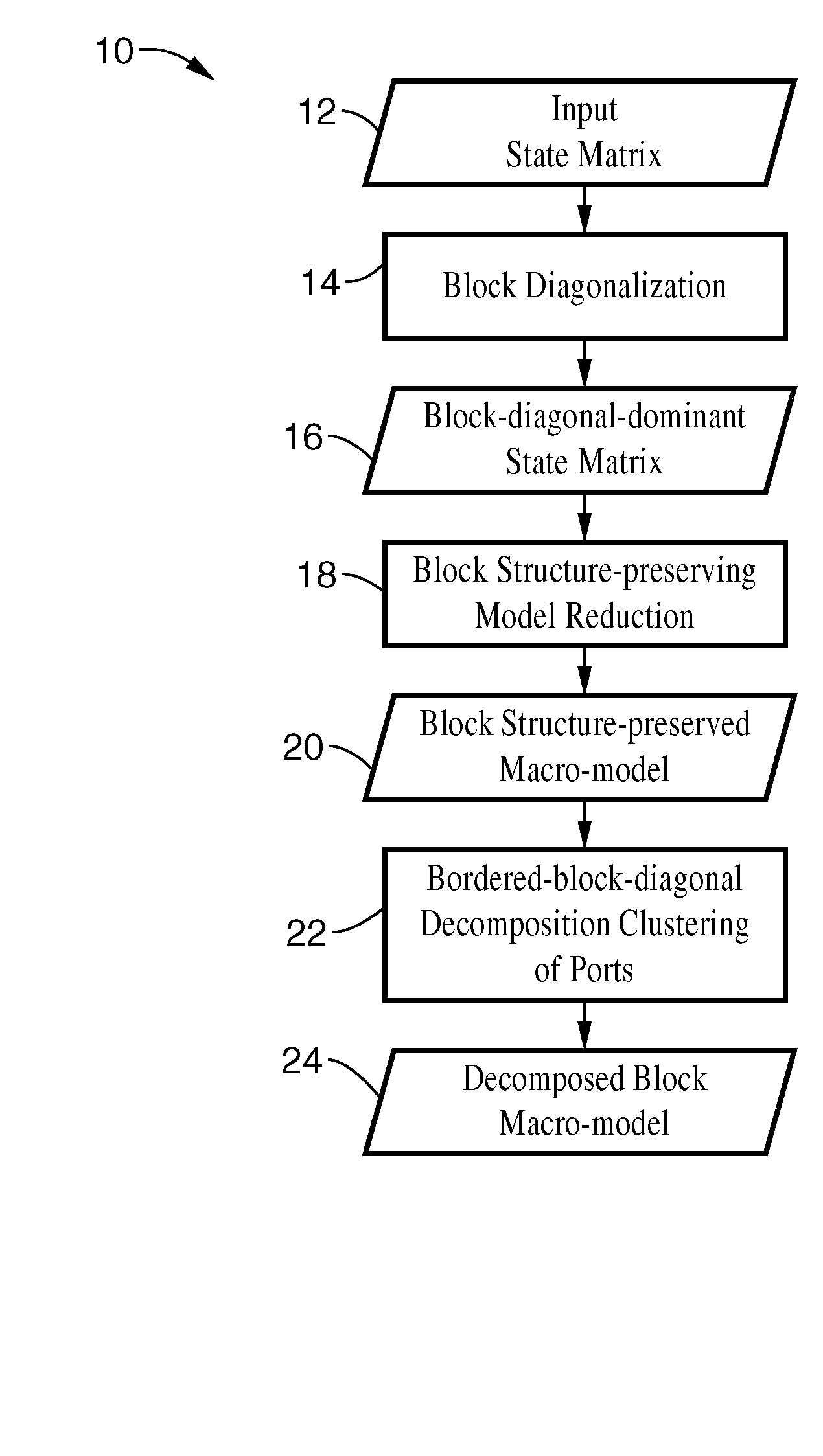Structured and parameterized model order reduction
a model and order reduction technology, applied in the field of micromodels for ic design, can solve the problems of low accuracy, low cost of computational cost, and low sensitivity information for design optimization, and achieve the effect of reducing redundancy in state matrices, more matched poles, and more accura
- Summary
- Abstract
- Description
- Claims
- Application Information
AI Technical Summary
Benefits of technology
Problems solved by technology
Method used
Image
Examples
Embodiment Construction
[0079] Referring more specifically to the drawings, for illustrative purposes the present invention is embodied in the apparatus generally shown in FIG. 1 through FIG. 45B. It will be appreciated that the apparatus may vary as to configuration and as to details of the parts, and that the method may vary as to the specific steps and sequence, without departing from the basic concepts as disclosed herein.
[0080] (A) Block Structure Preserving Model Order Reduction
[0081] 1. Introduction to Block Structure Preserving Method
[0082] To improve upon PRIMA, a structure-preserving model reduction (SPRIM) was proposed which partitions the state matrix in the MNA (modified nodal analysis) form into a natural 2×2 block matrices, i.e., conductance, capacitance, inductance, and adjacent (G;C; L;Es) matrices. Accordingly the projection matrix is partitioned and the number of its columns is doubled. As a result, SPRIM matches the twice poles of the models by using the projection matrix given by PR...
PUM
 Login to View More
Login to View More Abstract
Description
Claims
Application Information
 Login to View More
Login to View More - R&D
- Intellectual Property
- Life Sciences
- Materials
- Tech Scout
- Unparalleled Data Quality
- Higher Quality Content
- 60% Fewer Hallucinations
Browse by: Latest US Patents, China's latest patents, Technical Efficacy Thesaurus, Application Domain, Technology Topic, Popular Technical Reports.
© 2025 PatSnap. All rights reserved.Legal|Privacy policy|Modern Slavery Act Transparency Statement|Sitemap|About US| Contact US: help@patsnap.com



